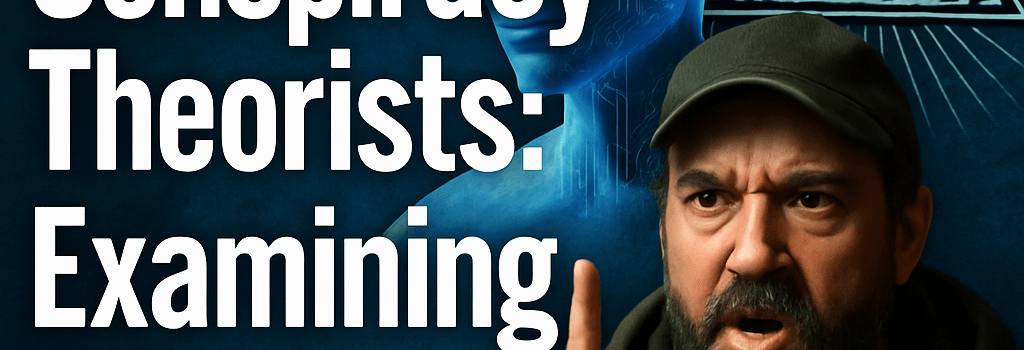AI and Conspiracy Theorists: Examining Fringe Beliefs

Introduction
Recent research from Cornell University psychologist Gordon Pennycook reveals that conspiracy theorists are not only overconfident in their own reasoning abilities but also wildly misjudge how many people share their views. Published in the Personality and Social Psychology Bulletin, the study suggests that a potent false consensus effect—where individuals overestimate the commonality of their opinions—may be one of the largest ever observed. This article expands on the original findings, adds technical context, and explores how AI-driven interventions could reshape the fight against misinformation.
Key Findings of the Overconfidence Study
- Eight controlled experiments with over 4,000 U.S. adults probed participants’ task performance versus their self-assessments.
- Participants evaluated obscure, partially obscured images and then estimated their own accuracy. Performance was uncorrelated with confidence ratings—a signature of generalized overconfidence.
- While only 12% of the sample endorsed classic conspiracy claims (e.g., Moon landing hoax, false-flag shootings), believers estimated that 93% of Americans agreed with them.
- This gap underscores an extreme false consensus effect, on par with or exceeding prior benchmarks in social psychology.
“It might be one of the biggest false consensus effects that’s been observed.”
—Gordon Pennycook, Cornell University
Methodological Innovations
The study counters critiques of the traditional Dunning–Kruger effect by decoupling skill and self-evaluation tasks. Whereas Dunning–Kruger conflates domain-specific incompetence and metacognitive blind spots, Pennycook’s team designed domain-neutral guessing tasks:
- Obscured image recognition: Subjects guessed objects hidden behind Gaussian blur filters.
- Random pattern classification: Participants identified arbitrary shapes generated via Perlin noise.
These tasks ensured no prior knowledge advantage, isolating baseline confidence as a trait. Confidence calibration was measured against actual accuracy, revealing a correlation coefficient (r) approaching zero—a hallmark of global overconfidence.
Neural and Cognitive Mechanisms
Why are some individuals prone to such miscalibration? Emerging neuroimaging studies suggest that overconfidence correlates with heightened resting-state connectivity between the dorsolateral prefrontal cortex (DLPFC) and the ventral tegmental area (VTA). This fronto-mesolimbic coupling may amplify reward signals when affirming one’s beliefs, making contradictory evidence feel subjectively aversive.
Additionally, computational models of belief updating—based on Bayesian inference—show that conspiracy believers assign disproportionately low weight (prior weight λ ≪ 1) to external evidence, bolstering confirmation bias. In effect, they operate with a “robust priors” kernel that resists likelihood adjustments, trapping them in echo chambers.
AI-Driven Interventions and Recent Advances
In 2024, Pennycook’s team partnered with a state-of-the-art large language model (LLM) fine-tuned for fact-checking and Socratic dialogue. The AI chatbot engaged users in real time, drawing on a 1.5 trillion–parameter knowledge base and crowdsourced fact repositories such as Snopes and Poynter. Key technical highlights:
- Dynamic counterargument synthesis: The model contextualizes debunks using user-specific language patterns inferred via transformer attention weights.
- Adaptive pedagogical scaffolding: It sequences questions to incrementally challenge underlying assumptions, following a modified Bloom’s taxonomy.
- Multi-modal support: Recent updates integrate computer vision modules to fact-check images and memes in social feeds.
In controlled trials, eight-minute AI conversations reduced belief strength by an average of 25%, with effects persisting eight weeks later. However, those with the highest overconfidence scores exhibited minimal change, highlighting a ceiling effect in digital persuasion.
Impact on Social Media Algorithms
Conspiracy content routinely triggers high engagement on platforms like X, Facebook, and TikTok, due in part to recommendation algorithms that maximize dwell time. These algorithms often optimize for engagement rate (ER) via gradient ascent on user click-through signals, inadvertently amplifying fringe narratives. Proposed technical mitigations include:
- Contextual demotion: Downranking posts with conspiracy-related keywords using a BERT-based classifier with >92% precision.
- In-feed debunk overlays: Deploying entity linking to attach fact-check summaries to disputed claims in real time.
- User-level calibration nudges: Prompting high-engagement users with self-assessment quizzes to reveal potential overconfidence biases.
Ethical and Privacy Considerations
While AI interventions show promise, they raise concerns around informed consent and algorithmic transparency. Deploying chatbots on private data streams—DMs or closed groups—requires robust encryption protocols and user opt-in mechanisms aligned with GDPR and CCPA guidelines. Additionally, open-sourcing model weights and validation datasets can foster independent audits, reducing the risk of covert propaganda.
Future Research and Policy Recommendations
To bridge the gap between overconfidence and realignment with objective reality, multidisciplinary efforts are essential:
- Longitudinal cohorts: Track metacognitive calibration and belief trajectories over years, incorporating wearable EEG/ERP measures.
- Interdisciplinary labs: Combine social psychologists, data scientists, and ethicists to co-design interventions.
- Regulatory frameworks: Encourage platforms to adopt “digital literacy by design” principles, embedding critical thinking modules within user flows.
By integrating cognitive science, AI engineering, and public policy, we can craft solutions that respect individual autonomy while mitigating the spread of harmful conspiracies.
Conclusion
Pennycook’s findings illuminate the hidden engine of conspiracy adherence: a robust, trait‐level overconfidence coupled with a colossal false consensus effect. While AI‐driven chatbots and algorithmic tweaks offer partial relief, the deeper challenge lies in re‐educating individuals about their own epistemic limitations. In an era of accelerating misinformation, fostering metacognitive humility may be our most potent defense.